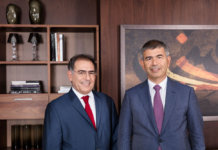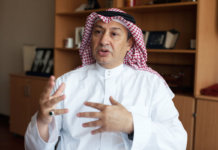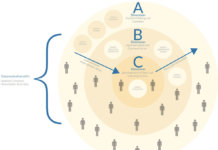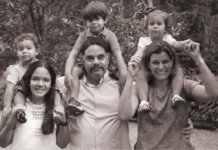There are as many solutions as there are family businesses when it comes to chosing the right family institutions. The following anonymous cases are based on interviews with various families, who kindly enough shared their family governance structures.
Case 1 – ROY FAMILY
Generation: 2
Number of Family Members: 9
Number of Family Members active in the Family Business: 3
Industry: Furniture and Interior Design
Family Institution: Family Council
The Roy family business was founded in 1985 by a husband (A) and wife (B) team, together with the husband’s brother (C). Over the years it has become a regionally successful company, expanding the original furniture business to include fully-fledged interior design services.
Today, the second generation is starting to be involved in the business. Next to A and B, C’s son has joined the management team and oversees the warehouses.
A and B’s three children have started to express interest in the business and would like to expand the operations to a neighbouring country. C and his daughter are considering starting another business together.
On advice from a friend, four years ago B started informal family meetings at their house to discuss issues facing the family and the business. One year ago, the second generation expressed the wish to formalise these meetings and set agendas. Therefore, the family formed a Family Council that takes place once a month at the company headquarters. The meeting has a set agenda and the personal assistant of A was tasked with taking the minutes of the meeting. The Family Council has also started taking on the function of an informal board of directors and a shareholder meeting. Based on their experience in the Family Council over the past year, the family has decided that the next step would be to formally separate the Board of Directors from the Family Council and to add non-family directors to the Board.
Case 2 – RAMOS FAMILY
Generation: 3
Number of Family Members: 35
Number of Family Members active in the Family Business: 16
Industry: Steel factory in two countries, diversified investments
Family Institutions: Family Assembly, Family Council
The Ramos Steel Factory was founded in 1960 by two brothers, E and F, during a construction boom in their home country. After successfully growing the company, in the early 1980s, joined by their sons, the founders started investing in various ventures, whilst staying strong in their steel core business. Today, E and F, their five children and four members from the third generation are active in the family business. Five third generation members are in charge of managing the investment portfolio. The family has always been very active in charities and has set up several philanthropic foundations, which are currently run by two family members.
Recently, there have been several misunderstandings between two branches of the family, mainly on how to further integrate other members of the third generation. On the family lawyer’s suggestion E and F nominated a team of 4 third generation members to set up a structure for the family to meet and discuss the future vision and steps forward.
The newly nominated team decided to set up a big annual family meeting, which they called “Family Assembly” during which all family members would be informed about news from the steel factory, the investment portfolio, and the charities. At the same time it would set the broad agenda for the family in the upcoming months. The Family Assembly would elect 10 family members from the second and third generation to be part of the Family Council. The Family Council would have an equal representation from each branch of the family and would meet six times a year to discuss important matters, take decisions and implement the family’s vision in the companies and the charities.
[ms-protect-content id=”4069,4129″]
Case 3 – MANSOOR FAMILY
Generation: 3
Number of Family Members: 110
Number of Family Members active in the Family Business: 5
Industry: 10 companies in various industries, family investments
Family Institutions: Family Assembly, Family Council, Family Committees, Family Office
Building on an early legacy of entrepreneurship the Mansoor family business started off in commodity trading, however branched out very early into various other industries, such as farming, real estate, oil and gas, and logistics. As the business grew, so did the family, and the founding family members, Mrs. N, her 3 sons, and 2 of her cousins quickly and successfully integrated the next generation into the business. By 1975, the family had 30 family members, most of whom were working in the family business. The family was committed to growing internationally and family members started living in various countries from the early 80’s onwards. The business developed well and the family remained in agreement on the growth strategy. However, due to growing up in different countries and receiving different educations, in the 2010s the third generation of the family did not have much in common. The senior family members realised with much concern that unless they would take action, the future business leaders would not see eye to eye and endanger family harmony, as well as challenge the stability of the business. One of the family members had attended a family business course at a business school and suggested to the board of directors to invest some money in the development of a family constitution and to setting up more formal Family Institutions. After 2 years of development and group work, the family was able to sign their family constitution and it marked the beginning of the work of the Family Institutions. Due to its rather impressive size, the family had decided to hold an annual Family Assembly in connection with the annual shareholder meeting. This way all family members would be informed of the important happenings in the family and in the business and be able to decide what to focus on in the coming year. An elected Family Council would focus on developing activities that would bring together the third generation of the family, organise exchange programs amongst the family branches, and run educational programs. Family Committees were nominated to deal with short-term issues or to organise specific events. In addition the senior generation decided to start a family office, which would take care of all non-operational investments.
Tharawat Magazine, Issue 28, 2015
[/ms-protect-content]














